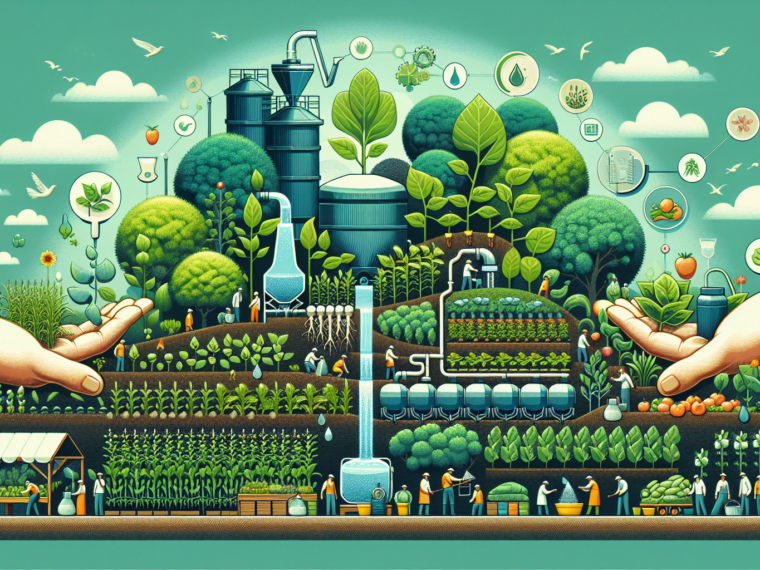A Little Background
With a surge in interest in environmentally friendly practices, many individuals are turning to organic gardening as a means to minimize their carbon footprint while also reaping the rewards of homegrown fruits and vegetables. The inherent goodness of this process stems from its holistic approach to working with nature rather than against it.
The Perks of Going Organic
Gardening organically brings with it an array of benefits that extend beyond just the satisfaction of growing your own produce. By steering clear of synthetic chemicals, organic gardens support a diverse ecosystem, fostering a harmonious environment for insects, birds, and other wildlife. Furthermore, consuming organically grown fruits and vegetables assures that you are not ingesting any harmful residues or toxins commonly found in conventionally grown produce.
Understanding Soil
Importance of Healthy Soil for Plant Growth
Healthy soil is crucial for successful plant growth. It provides the necessary nutrients, water retention, and aeration for plants to thrive. Without healthy soil, plants may struggle to grow and produce vibrant fruits and vegetables. To promote healthy soil, it is important to incorporate organic matter, such as compost and manure, to enrich the soil with essential nutrients.
Techniques for Improving Soil Fertility
There are various techniques that can be employed to enhance soil fertility. One effective method is crop rotation, which involves alternating the types of crops planted in a specific area each season to prevent nutrient depletion. Additionally, utilizing cover crops can help protect and improve the soil by reducing erosion and adding organic matter. Furthermore, incorporating organic fertilizers can provide essential nutrients that contribute to better soil fertility.
Soil Testing and Analysis
Conducting regular soil testing and analysis is critical for understanding the specific needs of the soil. This process helps identify any deficiencies or imbalances in nutrients, pH levels, and other important factors that influence plant growth. By obtaining this valuable information through soil testing, gardeners can make informed decisions about what adjustments are needed to optimize soil health and promote vigorous plant growth.
Seed Starting and Transplanting
Starting your garden from seeds is a must for any organic gardener. This can be done in small pots or trays, using good quality soil and ensuring the right light and temperature conditions. Once the seeds have sprouted and grown strong enough, they can be transplanted into the garden, giving them enough room to grow and thrive.
Succession Planting for Continuous Harvest
To keep a little going in your garden all season long, succession planting is the way to go. This involves planting new crops as soon as one crop is harvested, ensuring a continuous supply of fresh produce throughout the growing season. It’s a great way to maximize both space and time in your garden.
Crop Rotation to Prevent Disease and Improve Soil Health
Crop rotation involves moving your plants around each year so that different types of crops are grown in the same area. This helps to prevent disease build-up in the soil and improve overall soil health. By rotating your crops, you can maintain better balance in your garden and reduce the risk of pests and diseases.
Pest and Disease Control Methods
When it comes to managing pests and diseases in your organic garden, there are several strategies that can be employed.
Integrated Pest Management Strategies
Integrated pest management (IPM) is an approach that utilizes a variety of techniques to control pests while minimizing the impact on the environment. This may include using biological controls, such as introducing natural predators, as well as implementing cultural practices and physical barriers to deter pest activity. By incorporating multiple methods, IPM can effectively reduce pest populations without relying solely on chemical interventions.
Natural Methods for Controlling Pests and Diseases
In addition to integrated pest management, there are many natural remedies that can help control pests and diseases in an organic garden. These may include using insecticidal soaps or neem oil to combat insect infestations, and applying compost tea or other organic amendments to boost plant health and improve resistance to disease. By embracing these natural approaches, gardeners can maintain a healthy balance within their ecosystem while protecting their crops.
Companion Planting for Pest Prevention
Another proactive technique for managing pests in an organic garden is companion planting, which involves growing certain plants together to discourage pest activity. For example, planting aromatic herbs like basil or rosemary alongside susceptible crops can help repel pests due to their strong scents. Similarly, pairing nitrogen-fixing legumes with heavy-feeding vegetables can enhance soil fertility and deter pests that thrive in nutrient-poor conditions. By leveraging the concept of companion planting, gardeners can create a more resilient and harmonious growing environment.
Using greenhouses and hoop houses for year-round production
Greenhouses and hoop houses are great for keeping your garden going all year long. They can help protect your plants from harsh weather and keep them nice and cozy. You’ll have a little more work to do, but the rewards will be worth it.
Cold frames and row covers for early and late season crops
If you want to get a head start on your planting or keep things growing into the cooler months, cold frames and row covers are the way to go. These handy tools can provide some extra warmth and protection for your crops.
Extending the growing season with season-appropriate techniques
There are plenty of other tricks you can use to stretch out the growing season. Just a little extra care here and there can make a big difference. Try experimenting with different methods that suit the specific time of year – you might be surprised by how effective they can be.
When it comes to harvesting your garden produce, different plants require different techniques. For fruits and vegetables, it’s crucial to pick them at just the right time to ensure peak flavor and nutrition. Also, handling and storing harvested items is equally important to maintain their freshness and quality for longer periods.
Proper Harvesting Techniques
Each type of plant has its own ideal harvesting method. For example, leafy greens should be picked when they are young and tender for the best taste, whereas root vegetables should be harvested when they reach full maturity. It’s essential to familiarize yourself with the specific requirements of each plant in order to gather them at their prime.
Post-Harvest Handling and Storage
After harvesting, proper handling is crucial for preserving the produce. Pay attention to removing any damaged or bruised items as they can spoil the rest more quickly. Additionally, promptly store the harvested items in a cool, dark place to prolong their shelf life.
Maximizing Shelf Life
To maximize the shelf life of your harvested produce, employing efficient storage methods is vital. Utilize suitable containers and packaging techniques that help maintain freshness. Keeping an eye on environmental factors like humidity and temperature within the storage area is also imperative, as they can significantly influence how long your produce will remain in optimal condition.
Selling Your Organic Produce
When it comes to selling your organic produce, there are a variety of strategies that can help you connect with potential customers and increase your sales. Building relationships with local markets and consumers is key to establishing a loyal customer base. By understanding market demand and consumer preferences, you can tailor your products to meet the needs of your target audience.
Strategies for Selling Organic Produce
Selling organic produce requires more than just putting your products out there. You need to consider the best ways to reach your potential customers and differentiate yourself from conventional produce. This could involve participating in farmers’ markets, offering a community-supported agriculture (CSA) program, or partnering with local restaurants or grocery stores.
Building Relationships with Local Markets and Consumers
Establishing strong relationships with local markets and consumers is essential for the success of your organic gardening business. Take the time to engage with potential buyers, understand their needs, and communicate the benefits of organic produce. This can help you gain their trust and loyalty over time.
Understanding Market Demand and Consumer Preferences
To effectively sell your organic produce, it’s vital to stay attuned to market demand and consumer preferences. Keep an eye on trends in the industry, seek feedback from your customers, and adapt your offerings accordingly. By staying ahead of the curve, you can ensure that you’re meeting the evolving needs of your target market.



